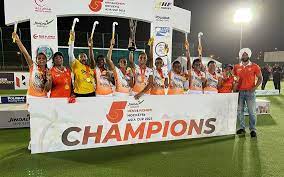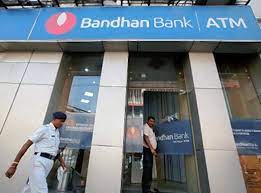
Current Affairs is the most important area in all competitive exams. But the difficulty level is very high. That’s why; many aspirants get confused, how to select Current Affairs for Preparation of Competitive Examination? In this Post, Daily Current Affairs 23 August 2023, we have tried to cover each and every point and also included all important facts from National/ International news that are useful for upcoming competitive examinations such as UPSC, SSC, Railway, State Govt. etc.
So, here is the Top News of the Day for 23 August 2023 to help you prepare the Latest Current Affairs part. After reading this section, you can successfully attempt Current Affairs Quiz.
Current Affairs for Competitive Exam – 23 August 2023
What is “15 Minutes of Terror” in Chandrayaan-03 Mission?
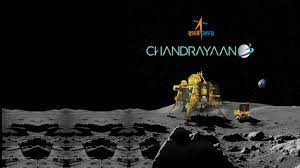
What is the “15 Minutes of Terror”?
The critical technical manoeuvre that the Chandrayaan-3 lander will have to perform on August 23 when it enters the final 15 minutes of its attempt to make a soft landing on the Moon will be to transfer its high-speed horizontal position to a vertical one in order to facilitate a gentle descent on to the surface. The “15 Minutes of Terror” portion of the mission will be the most critical, but ISRO is sure that the Vikram lander will be able to execute these manoeuvres and land safely on the Moon’s south pole.
Daily Current Affairs Quiz: August 2023
The initial preparation phase
The initial preparation phase comprises the final 1,139 seconds of the Chandrayaan-3 mission, and it is during this stage that the most critical operations will be performed.
The velocity reduction phase
The velocity reduction phase will take 690 seconds, during which thrusters will be fired to reduce Vikram’s velocity to one-fourth of its initial speed.
The fine braking phase
The delicate braking phase is the final essential manoeuvre. During this phase, the lander will be vertically oriented and hover 800 to 1,300 metres above the landing spot. The lander will then use its thrusters to make small adjustments to its position in order to land safely.
The landing
Once the Vikram lander successfully lands on the lunar south pole, the sensors will signal the computer onboard the spacecraft. After that, the lander will be fully powered up, and Vikram will unfold the rover ramp, allowing the Pragyan rover to begin its lunar mission.
Learning from the failures
“Before the Chandrayaan-2 probe could approach its final “terminal descent phase,” it lost control and collided with the Moon’s surface during the “attitude hold phase” and the “fine braking phase”. The failure studies were used to boost the likelihood of a touchdown for Chandrayaan-3. The initial rough braking phase of Chandrayaan-2 used a first-order automated guidance system; whereas Chandrayaan-3 is using a second-order guidance system. In Chandrayaan-3, the rough braking phase also uses an immediate thrust regulation.”
Distance Between Earth and Moon?
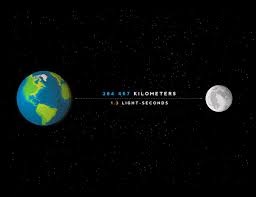
The Earth-Moon distance is 384,400 kilometres (238,855 miles) on average. This is approximately 30 times the diameter of the Earth. The Moon’s orbit around Earth is elliptical, so the distance between the two bodies varies slightly.
The Moon’s closest approach to Earth is called the perigee. At perigee, the Moon is about 363,104 kilometers (225,623 miles) from Earth. The apogee is the distance between the Moon and Earth. The Moon is approximately 405,696 kilometres (252,088 miles) distant at apogee.
Daily Current Affairs Quiz: August 2023
Important point you must know about the Moon
The Effect on Tides and Eclipses
The Moon’s distance from Earth has a significant impact on the strength of ocean tides. When the Moon is closest to Earth, the gravitational pull of the Moon is stronger, which causes the tides to be higher. When the Moon is farthest from Earth, the gravitational pull is weaker, which causes the tides to be lower.
The Moon’s distance from Earth also affects the appearance of solar eclipses. When the Moon is at perigee, it appears larger in the sky, which means that it can completely block out the Sun during a solar eclipse. Because the Moon appears smaller in the sky while it is at apogee, it may only partially block out the Sun during a solar eclipse.
The Changing Distance
The Moon’s distance from Earth is constantly changing due to the gravitational pull of the Sun and other planets. However, for billions of years, the average distance between the two bodies has stayed relatively constant.
The Formation of the Moon
The Moon is the only natural satellite of Earth. It is thought to have formed about 4.5 billion years ago, when a large object collided with Earth. The impact ejected a large amount of debris into space, which eventually coalesced to form the Moon.
The Moon Today
The Moon is a fascinating and mysterious place. Mountains, valleys, craters, and lava flows can be found here. There is additional evidence that the Moon’s surface formerly held liquid water.
The Future of the Moon
The Moon is a valuable resource for scientists and engineers. It can be used to study the history of the solar system, to develop new technologies, and to explore other worlds. The Moon is a truly unique and special place, and we are only beginning to understand its full potential.
10 Facts you must know about Chandrayan-3
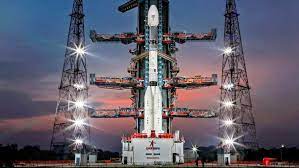
10 Facts you must know about Chandrayan-3
At 2:35 p.m., Chandrayaan-3 was launched from the Satish Dhawan Space Centre in Sriharikota, Andhra Pradesh, aboard ISRO’s largest and most powerful rocket, the Launch Vehicle Mark III.
Daily Current Affairs Quiz: August 2023
India intends to soft-land Chandrayaan-3 on the Moon’s South Pole. If this mission is successful, India will become the fourth country to achieve a soft landing of a spacecraft on the Earth’s Natural Satellite. And also India will become the first country in the world to land a spacecraft on the Moon’s South Pole.
Chandrayaan-3, is all set to make a soft and successful landing on the south polar region of the Moon around 6.04pm on August 23.
Here is the 10 Interesting Facts about the Chandrayaan-3:
- Chandrayaan-3 is a follow-on mission to Chandrayaan-2 which aims at soft landing at Moon’s south pole. It consists of a lander and a Rover that were launched into space by the LVM3 rocket from SDSC SHAR in Sriharikota. While the Chandrayaan-2, which was launched in 2019, included an orbiter, a Lander, and a Rover, the craft lost all signals just minutes before it was intended to land due to a technical malfunction, and it later crashed. Though it was not a complete failure, the orbiter is still functional and provides valuable data to the organization.
- The launcher used to support the moon lander Vikram is GSLV (Geosynchronous Satellite Launch Vehicle) also known as Launch Vehicle Mark III. The height of this launcher is about 5 metres.
- The spacecraft is expected to touch down on the moon on 23 August after a voyage that will last more than 40 days. The craft is scheduled to arrive on the Moon’s South Pole, where Chandrayaan-1 discovered water molecules and stunned the world with its enormous success.
- ISRO has done some modifications to make it reliable than its predecessor. Chandrayaan-3 consists of a Lander Vikram, which is named after Vikram Sarabhai, the Rover Pragyan and a propulsion module. The weight of the Vikram Lander has been increased by 280kg from its previous version and it also carries more fuel to stay on it’s intended path to the Moon’s surface.
- The craft weighs 3,900 kg in total, with the propulsion weighing 2148 kg and the lander and Rover weighing 1752 kg. This total weight is close to the maximum capacity of the GSLV MK III which is India’s strongest rocket.
- Chandrayaan-3 has three phases: the Earth-Centric Phase, the lunar-transfer phase and the Moon-Centric Phase.
The Earth Centric Phase involves the pre-launch phase and the Earth bound manoeuvre phase which will help the spacecraft to change its directions.
The Lunar-Transfer Phase involves the transfer trajectory phase which will help it to choose the path that will lead it towards the lunar orbit.
The Moon-Centric Phase involves all steps from lunar orbit insertion to landing.
- As Chandrayaan-3 safely lands on the moon, the Pragyan Rover will be deployed to explore. The Rover will be released from Lander using a ramp. This six-wheeled spacecraft rover is powered by solar energy and carries two spectrometers to investigate the composition of the moon’s surface. It will move around the landing area for about 14 Earth Days which is equivalent to one lunar day.
- The Chandrayaan-3 Vikram Lander is outfitted with four scientific instruments. The first one is seismometer designed to detect moonquakes, the second one studies how heat moves through the lunar surface, the third aims at understanding the plasma environment around the moon and the fourth one is retro-reflector which helps to understand the gravitational interaction between the moon and the planets.
- The lander will touch down on the moon’s surface with a horizontal velocity of less than 5 metre per second, a vertical velocity of less than two metre per second and a slope less than 120 degrees.
- To date only three countries have successfully achieved lunar landings: the United States, the former Soviet Union and China. India aiming to be the fourth country to safe landing on the Moon’s surface and first nation in the world to land on the Moon’s South Pole.
Who is the Chandryaan-3 lander and rover named after?
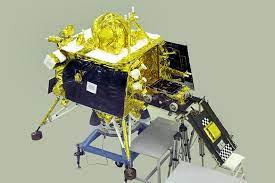
The lander module of Chandrayaan 3, Isro’s third Moon mission, is set to attempt landing on the lunar mission. A successful soft landing will make India the first country to reach the uncharted south pole of the Moon, Earth’s only natural satellite. Chandrayaan 3 is a follow-up project to Chandrayaan-2 that aims to demonstrate safe and soft landings on the lunar surface, lunar wandering, and in-situ scientific investigations. The Moon’s south pole region is of interest because there could be a possibility of water in permanently shadowed areas around it.
Daily Current Affairs Quiz: August 2023
Who is Chandryaan-3 lander named after?
The lander and rover of Chandrayaan 3 will have a mission life of one lunar day (about 14 earth days) to study the surroundings on the Moon’s south pole. ISRO officials, however, haven’t ruled out the possibility of the lander module coming to life for another lunar day. The lander has been called ‘Vikram’ after Indian space pioneer Vikram Sarabhai. The box-shaped lander weighs 1749.86 kg, including the rover, and has four landing legs and four landing thrusters, as well as the ability to generate 738 W via side-mounted solar panels. The Vikram lander will begin its final descent with the rover to the south polar region of the Moon at 5:45pm IST and is expected to land about 19 minutes later.
Who is Chandryaan-3 Rover named after?
India’s lunar rover, named Pragyan means wisdom in Sanskrit, is designated to embark on a pioneering mission of lunar discovery after the successful landing of Chandrayaan-3’s lander Vikram.
Chandrayaan-2 vs Chandrayaan-3: A Comparative Analysis
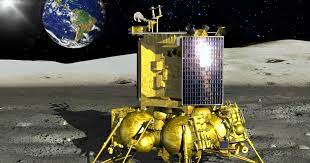
ISRO (Indian Space exploration Organisation) is preparing to launch Chandrayaan-3, its third lunar exploration mission, on July 14, 2023. This mission intends to correct the mistakes made by its predecessor, Chandrayaan-2, by performing a successful soft landing on the lunar surface as well as rover exploration. In this article, we will delve into the key differences between these two missions.
Daily Current Affairs Quiz: August 2023
Chandrayaan-2:
Chandrayaan-2 comprised an orbiter, a lander named Vikram, and a rover named Pragyan. The mission was designed with a success-based strategy in mind, with the goal of landing precisely within a 500mx500m rectangle. The Vikram lander featured five legs and a central thruster.
Chandrayaan-3:
Chandrayaan-3 is designed with a focus on failure-based strategies to enhance mission success. The mission includes a lander named Vikram and a rover named Pragyan, omitting the orbiter from the configuration. The landing zone has been increased, allowing the lander to land securely anywhere within a 4kmx2.4km rectangle. The Vikram lander now has more fuel to go longer distances to the landing spot or an alternate site if necessary. The lander’s landing site determination has been improved by integrating high-resolution images from Chandrayaan-2’s orbiter. Changes in the lander’s physical structure include removing the central thruster, strengthening the legs for higher velocity landings, and adding more solar panels for increased power generation.
Payloads and Scientific Instruments:
Chandrayaan-2:
Chandrayaan-2’s payloads included scientific instruments on the orbiter, lander, and rover. The orbiter was equipped with sensors for studying the Moon’s surface and exosphere, among other things. RAMBHA, ChaSTE, ILSA, and LP were among the lander payloads designed to measure various characteristics of the lunar environment. The Pragyan rover had Alpha Particle X-ray Spectrometer (APXS) and Laser Induced Breakdown Spectroscope (LIBS) for elemental analysis.
Chandrayaan-3:
The propulsion module of Chandrayaan-3 carries the SHAPE payload, designed to search for habitable planets through spectro-polarimetry. Lander payloads include RAMBHA (from NASA), ChaSTE, ILSA, and LP, similar to Chandrayaan-2, measuring seismicity, thermal properties, and more. Rover payloads remain consistent with APXS and LIBS for in-situ elemental composition analysis.
Implementation and Soft Landing:
Chandrayaan-2:
The Vikram lander attempted a soft landing on the lunar surface but faced a failure during descent due to a last-minute glitch. Because of the failed landing, Chandrayaan-2’s Pragyan rover could not be deployed.
Chandrayaan-3:
Chandrayaan-3 aims to achieve a successful soft landing with Vikram and deploy Pragyan rover to explore the lunar surface. The advances in landing site identification and design adjustments boost the odds of a successful landing.
Significance and International Context:
Chandrayaan-2’s setback highlighted the complexity and challenges of lunar exploration, inspiring a failure-based approach in Chandrayaan-3. If Chandrayaan-3 meets its mission objectives, India will become the fourth country after the United States, Russia, and China to conduct a successful soft landing on the Moon.
Chandrayaan-3 Mission Overview and Soft Landing on the Moon
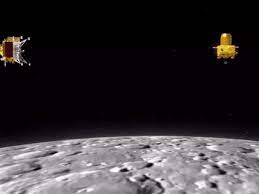
Chandrayaan-3, India’s lunar exploration mission, is set to achieve a critical milestone – a soft landing on the moon’s surface. This accomplishment would make India the only country to have accomplished this feat. Let’s look at the relevance of a gentle landing, the difficulties of landing on the moon’s south pole, and the complexities of the Chandrayaan-3 landing.
Daily Current Affairs Quiz: August 2023
What is a Soft Landing and Why South Pole?
- A soft landing involves controlled descent at a gentle speed to prevent spacecraft damage upon landing.
- The mission of Chandrayaan-3 is to show safe and gentle landings, rover mobility, and scientific experiments.
- Landing at the moon’s south pole is a remarkable challenge, as it showcases a spacecraft’s technical prowess.
- Previous landings occurred near the equator for better terrain, temperature, sunlight, and energy supply.
Chandrayaan-2’s Setback and Changes in Chandrayaan-3:
- During its 2019 landing attempt, Chandrayaan-2 encountered software and hardware difficulties.
- Chandrayaan-3 adopts a failure-based design approach to address the shortcomings.
- Improvements include stronger landing legs, a larger landing area, more fuel capacity, and improved solar panels.
Technical Details of Chandrayaan-3’s Landing:
Rough Braking Phase:
- Reduce horizontal velocity from 1.68 km/sec at 30 km altitude to nearly zero for soft landing.
Attitude Hold Phase:
- The lander tilts from horizontal to vertical at 7.42 km altitude, covering 3.48 km.
Fine Braking Phase:
- Lasts around 175 seconds, moving lander fully into a vertical position.
- Descends to an altitude of 800-1,000 m at a nominal speed of 0 m/sec.
- This phase is crucial due to Chandrayaan-2’s past loss of control during this stage.
Terminal Descent:
- Final stage, where the lander descends vertically onto the moon’s surface.
After Successful Landing:
Payloads aboard Vikram lander and rover Pragyan remain consistent. Lander’s payloads study lunar quakes, thermal properties, plasma changes, and distance measurement. Rover payloads examine the chemical and mineral composition of the lunar surface, which includes components like as magnesium, aluminium, and iron.
Yes Bank Launches All-In-One ‘IRIS’ Mobile App

In a significant leap forward for India’s digital banking landscape, YES BANK has introduced its groundbreaking mobile banking app, IRIS by YES BANK. This new software is set to change the way clients interact with their financial institutions by providing an unrivalled combination of ease, efficiency, and personalisation. With over 100 features and services available at the touch of a button, iris by YES BANK represents a quantum leap in digital banking.
Daily Current Affairs Quiz: August 2023
Empowering Customers with a Seamless Experience
Designed to cater to both existing and new customers, IRIS by YES BANK introduces a new era of banking convenience. The app’s sleek and intuitive user interface is crafted to provide a simplified banking experience that appeals to users of all age groups and backgrounds. Aside from its user-friendly design, the app is fortified with cutting-edge security features such as Biometric Authentication, Sim-Binding, and a 2-factor Verification system, assuring the highest level of security for clients’ financial data.
Co-Creation and Technological Prowess
A highlight of iris by YES BANK is its co-creation process. Based on valuable feedback from YES BANK customers, the app is a product of collaboration between the bank and its clientele. This symbiotic relationship between the bank and its customers demonstrates YES BANK’s commitment to creating a digitally empowered ecosystem within the country.
YES BANK has translated client input into a strong solution that enables users to meet their banking needs on the road by using its technological prowess. The app stands as a testament to the bank’s dedication to providing cutting-edge digital solutions that elevate the overall banking experience.
Key Features of IRIS by YES BANK
The app offers a comprehensive suite of features, including:
- Savings Account Opening: Users can effortlessly open a savings account in real-time via the app.
- Credit Cards: Access to a variety of YES BANK credit card alternatives, all with simple application processes.
- Instant Loans: Quick approvals for YES BANK’s lending products available directly through the app.
- Deposits: Conveniently book recurring and fixed deposits on the go.
- Effortless Payments: Multiple digital payment modes for seamless transactions.
- Customized Investments: Access to diverse investment options tailored to individual risk appetites and financial goals.
- Integrated Insurance Services: Choose from a selection of insurance services within the app.
Accessible Across Platforms
The IRIS by YES BANK mobile app can be downloaded from the Google Play Store and the App Store. The software, which is compatible with both Android and iOS smartphones, promises that a transformational banking experience is only a download away.
Key takeaways for competitive examinations
- Managing Director & CEO of YES BANK: Mr. Prashant Kumar
India’s First Hydrogen Bus Hits the Public Roads in Leh, Ladakh
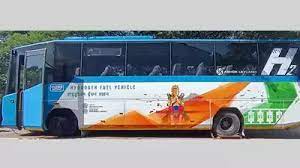
Unveiling the Hydrogen Bus in Leh
NTPC Limited, a famous Maharatna Public Sector Undertaking (PSU) under the Ministry of Power (MoP), has launched the testing of India’s first hydrogen bus in the scenic region of Leh, located in the Union Territory (UT) of Ladakh. This remarkable endeavor not only marks the country’s first utilization of hydrogen buses on public roads but also reflects NTPC’s commitment towards fostering sustainability and reducing carbon emissions.
Daily Current Affairs Quiz: August 2023
The maiden hydrogen bus has arrived in Leh, symbolizing the commencement of a significant three-month-long process. This procedure includes rigorous field tests, thorough roadworthiness assessments, and necessary regulatory clearances, all of which are necessary stages towards integrating hydrogen-powered buses into Ladakh’s transportation environment.
NTPC’s Vision for a Carbon-Neutral Ladakh
NTPC’s strategic objectives align seamlessly with its vision of cultivating a carbon-neutral Ladakh. To realize this vision, the company is orchestrating the establishment of a cutting-edge hydrogen fuelling station and an expansive solar plant, boasting a capacity of 1.7 MW. These dual infrastructure components play a pivotal role in providing renewable power to facilitate the hydrogen mobility project.
Fuel Cell Buses: Uniquely Tailored for High Altitude Challenges
The NTPC fuel cell buses introduced in Leh are a technological wonder, purpose-built to perform flawlessly in the difficult conditions that prevail at an elevation of 11,562 feet. The rarefied atmosphere and sub-zero temperatures characteristic of such altitude locations pose distinct challenges that these innovative buses are engineered to overcome.
Driving Towards Renewable Energy: NTPC’s Ambitious Goals
NTPC’s aspirations extend far beyond the Ladakh project, encompassing a broader commitment to renewable energy. The company intends to attain an astonishing 60 GW of Renewable Energy capacity by 2032, demonstrating its commitment to playing a vital role in improving Green Hydrogen Technology and Energy Storage.
Multifaceted Decarbonization Initiatives
NTPC’s efforts towards decarbonization span a diverse spectrum of initiatives. These include pioneering advancements such as Hydrogen blending, pioneering Carbon Capture technologies, the introduction of Electric Vehicle (EV) buses, and the establishment of Smart NTPC Townships. Each of these efforts makes a significant contribution to the overall goal of lowering carbon footprints and promoting sustainable practises.
Conclusion: Pioneering a Sustainable Future
Inaugurating India’s first-ever hydrogen bus trial in Leh signifies NTPC’s pioneering spirit and its resolute commitment to a sustainable future. The integration of hydrogen-powered buses, the establishment of a dedicated solar plant, and the development of innovative solutions for high-altitude challenges are all stepping stones towards a greener, more sustainable Ladakh and, by extension, a more environmentally conscious India.
Viacom18 appointed Kiran Mani as CEO of digital business

Viacom18 has appointed Google’s Kiran Mani as CEO overseeing digital business operations in August 2023. Currentl he holds the position of General Manager and MD for Android and Google Play in the Asia Pacific region at Google. He has been associated with the company for over 13 years now.
Daily Current Affairs Quiz: August 2023
Mani, in his role as the head of the digital business, will have the responsibility of leading the expansion of JioCinema, according to the sources.
In the past, Disney Star’s Kevin Vaz joined Viacom18 as CEO of TV and digital (regional entertainment). Alok Jain, another former Disney Star executive, has also joined Viacom18 as President and Head of Colors Hindi and Regional.
Canara Bank launches UPI Interoperable Digital Rupee mobile application
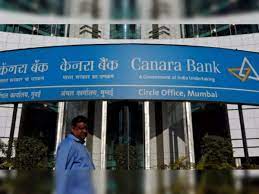
Canara Bank launched the UPI Interoperable Digital Rupee mobile application and become the first bank in both the public and commercial sectors to offer this feature via its CBDC mobile app called the Canara Digital Rupee.
Daily Current Affairs Quiz: August 2023
Aim: To empower merchants to accept digital currency payments using their existing UPI QR codes in addition to UPI-based payments without the requirement of a separate onboarding process for CBDC.
“With the introduction of this feature, customers will be able to scan merchant UPI QR codes using the app and make the payment through digital currency. Further, this feature empowers the merchants to accept digital currency payments using their existing UPI QR codes in addition to the UPI based payments without the requirements of a separate on boarding process for CBDC,” the company said in a release.
CEO of Canara Bank is K. Satyanarayana Raju.
Saudi Arabia Launches AI-Powered Program to Combat Desertification
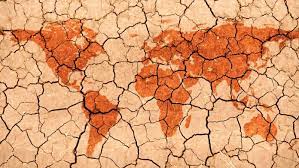
The Saudi Environment Ministry has launched a program to combat desertification using artificial intelligence (AI).
The program, which is a collaboration between the ministry, the National Center for Vegetation Development and Combating Desertification, and the King Abdullah University of Science and Technology, aims to study the status of vegetative cover in the Kingdom and contribute to the goals of afforestation projects and the “Green Saudi” initiative.
Daily Current Affairs Quiz: August 2023
It will use AI to analyze satellite imagery to identify areas that are most vulnerable to desertification. Remote sensing technologies will be used to monitor vegetation cover, and track its changes over time.
The program will also develop strategies to mitigate the effects of desertification, such as planting trees and shrubs, improving water management, and promoting sustainable agriculture. The launch of the program is a significant step in Saudi Arabia’s efforts to combat desertification and achieve its sustainability goals. The program will use cutting-edge technologies to help the Kingdom protect its natural resources and build a more sustainable future.
Shivraj Singh Chouhan inaugurated Mukhyamantri Seekho-Kamao yojna scheme
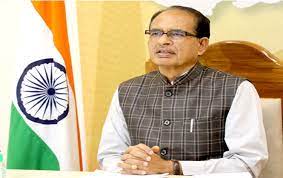
CM Shivraj Singh Chouhan inaugurated the scheme Mukhyamantri Seekho-Kamao yojna means ‘Chief Minister’s Learn-Earn’ scheme in Madhya Pradesh.
The scheme has facilitated on-the-job training on the lines of ‘learn and earn along with skill development, and has been started for the youth in the age group of 18 to 29 yrs.
Daily Current Affairs Quiz: August 2023
Under the scheme, the selected youth will be given training according to the requirements of the industries and also get an 8 to 10 thousand rupees stipend.
Chief Minister Shivraj Singh Chouhan will inaugurate the scheme today by distributing contract letters to the youth. The state government is targeted to include one lakh youth in the first phase of the ‘Mukhyamantri Seekho-Kamao’ scheme. However, more than 8 lakh 69 thousand youths have already registered themselves so far. A total of 16 thousand 450 establishments have also been registered. These establishments have published around 69 thousand posts for the registered youth. Out of them, contracts have also been signed for more than 14 thousand posts.
NHPC signs MoU with RITES for Dibang Multipurpose Project Arunachal Pradesh
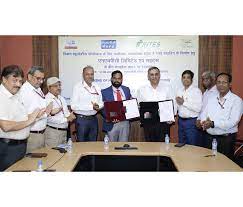
State-owned hydro power giant NHPC signed MoU with Rail India Technical and Economic Service to construct railway siding for a 2,880 MW Dibang multipurpose project.
According to the statement, the agreement was signed by General Manager (Civil) Dibang and Executive Director, RITES, in the presence of Biswajit Basu, Director (Projects) NHPC at corporate office of NHPC.
Daily Current Affairs Quiz: August 2023
NHPC’s total installed capacity is 7,097.2 MW of renewable power (including wind and solar) through its 25 power stations, including 1,520 MW through its subsidiary.
RITES will provide comprehensive and efficient solutions for developing rail infrastructure facilities for NHPC Dibang.
Novak Djokovic secured the titles Cincinnati Open 2023

Novak Djokovic of Serbia secured the titles Cincinnati Open 2023 after defeating Carlos Alcaraz of Spain.
Daily Current Affairs Quiz: August 2023
The win delivered Djokovic his 95th career title and 39th Masters 1000 crown. The Spaniard is currently ranked at number one in the ATP Tour rankings, with Djokovic ranked just behind him at number two.
Djokovic is the only player in tennis history to be the reigning champion of all four majors at once across all three different surfaces.
IREDA signs MoU with Government, Revenue Target for 2023-24 set at ₹ 4,350
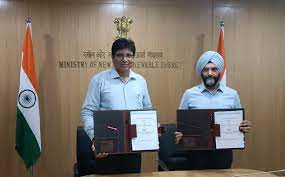
Indian Renewable Energy Development Agency (IREDA), a Mini Ratna (Category – I) Government of India enterprise under the administrative control of Ministry of New and Renewable Energy, has signed a performance-based Memorandum of Understanding (MoU) with the Ministry of New and Renewable Energy, Government of India. The MoU, in alignment with guidelines issued by Department of Public Enterprises, Ministry of Finance, outlines strategic targets that IREDA aims to achieve during the fiscal years 2023-24 and 2024-25.
Daily Current Affairs Quiz: August 2023
IREDA is a Mini Ratna (Category – I), Government of India, enterprise. The Gov of India has set a Revenue from Operation target of Rs 4,350 crores for the FY 2023-24 and Rs 5,220 crores for 2024-25.
As per the MoU, the Government of India has set a Revenue from Operations target for IREDA, of ₹ 4,350 crores for the financial year 2023-24 and ₹ 5,220 crores for 2024-25. Notably, the company had achieved a Revenue from Operations figure of ₹ 3,482 crores in the preceding fiscal year, against a target of ₹ 3,361 crores.
The government has also specified other key performance parameters in the MoU, including Return on Net Worth, Return on Capital Employed, NPA to Total Loans Ratio, Asset Turnover Ratio, and Earnings per Share.
The MoU was signed by Secretary, MNRE, Shri Bhupinder Singh Bhalla and Chairperson & Managing Director (CMD), IREDA, Shri Pradip Kumar Das at Atal Akshay Urja Bhawan, New Delhi on August 21, 2023. Other senior officials of MNRE and IREDA were also present on the occasion.



